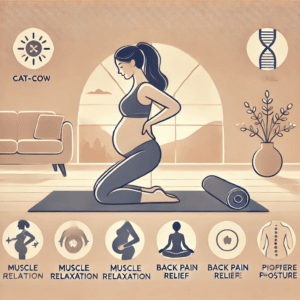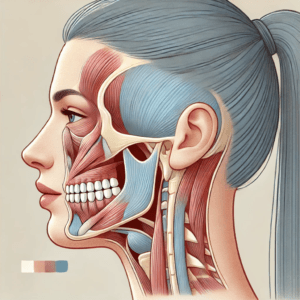How to Know If You’re Having a Mini-Stroke (TIA) ⚠️
Table of Contents

How to Know If You’re Having a Mini-Stroke (TIA) 🧠
Wait… What Is a Mini-Stroke?
You feel off for a minute. Your speech slurs. Your arm feels numb.
Then—poof—everything’s back to normal.
You might brush it off. “Must’ve been low blood sugar.”
But that “weird episode” might’ve been a mini-stroke—and that’s not something to ignore.
Here’s the real deal:
A Transient Ischemic Attack (TIA) is a temporary blockage of blood flow to the brain.
The key word? Temporary. Symptoms go away fast—often in under an hour.
But here’s what most people don’t know:
🧨 A TIA is a loud warning shot.
40% of people who have a TIA will have a full stroke—many within days or weeks.
So let’s get real about how to know if you’re having a mini-stroke—before the big one hits.
⏱️ What Does a Mini-Stroke Feel Like?
A TIA feels a lot like a stroke—but the symptoms vanish quickly.
Here are the most common symptoms:
✅ Classic Mini-Stroke Signs:
- Sudden numbness or weakness in face, arm, or leg—especially on one side
- Slurred speech or trouble understanding words
- Blurry or double vision
- Dizziness or trouble walking
- Loss of coordination or balance
- Confusion or trouble thinking clearly
The difference? With a TIA, these signs usually resolve in less than 24 hours—often within 5 to 30 minutes.
But don’t let that fool you.
Temporary = dangerous, not harmless.
🔄 TIA vs. Stroke: What’s the Difference?
| Feature | TIA (Mini-Stroke) | Stroke |
|---|---|---|
| Duration | < 24 hours (often < 1 hour) | Lasts longer or permanent |
| Symptoms | Similar to stroke | Similar to TIA |
| Brain damage | Typically none (if treated immediately) | Permanent damage possible |
| Urgency | Still a medical emergency | Medical emergency |
| Risk | Often a warning sign for a future stroke | Can follow a TIA if ignored |
👉 If it feels like a stroke, treat it like one—even if symptoms disappear.
🧠 Why TIAs Are Dangerous (Even Though They “Go Away”)
Here’s what makes TIAs so scary:
- They’re easy to dismiss—and people often do.
- Most people don’t get checked because the symptoms vanish.
- But a TIA often means a major stroke is on the way.
📊 1 in 3 people who ignore a TIA will have a full stroke within a year.
If your body gives you a warning… don’t hit snooze.
📋 Commonly Overlooked Mini-Stroke Symptoms
Not every TIA is textbook. Here are some surprising symptoms:
- Sudden trouble writing or typing
- Forgetting how to do routine tasks (like making coffee)
- One eye going dark or blurry briefly
- A strange sensation of floating or disconnect
- Temporary difficulty swallowing
These “soft signs” often get ignored—especially in younger people.
🧠 Reminder: Stroke and mini-stroke can happen at any age.
👀 Real Stories: “I Thought It Was Nothing”
“I was talking on the phone and suddenly couldn’t get my words out. It passed in 2 minutes. I ignored it. Two days later, I had a massive stroke.”
— Michael, age 52“I kept dropping things and felt weirdly clumsy. Lasted about 20 minutes. Thought I was just tired. Turned out I had a TIA.”
— Lena, age 45
The pattern? Symptoms passed, they dismissed them—and that could’ve been fatal.
🚨 What Should You Do If You Suspect a Mini-Stroke?
Don’t wait. Don’t Google. ACT.
- Call 911 immediately
Don’t drive yourself. Emergency treatment could prevent a stroke. - Note the time symptoms started
It helps doctors determine if clot-busting meds can be used. - Get a stroke screening
Even if symptoms disappear, you need brain imaging (CT/MRI) ASAP.
📈 Can a TIA Be Prevented from Becoming a Stroke?
Yes. A TIA is your one-time warning.
Here’s how to respond:
🔧 Immediate Actions:
- 🧠 Get a neurological evaluation
- 💉 Start or adjust blood thinners or statins
- 🩺 Monitor blood pressure
- 🔄 Review any recent medication changes (birth control, hormone therapy, etc.)
🛡️ Lifestyle Adjustments:
- 🚭 Stop smoking (yes, even “just a few”)
- 🍎 Switch to a low-sodium, heart-healthy diet
- 🏃 Exercise consistently (30 mins/day)
- 🍷 Cut back on alcohol
- 💊 Take your meds every day
📥 Don’t Ignore the Signs — Schedule a Screening Today
Your body doesn’t throw false alarms.
A mini-stroke is a big deal—even if it disappears in minutes.
🎯 Book a stroke screening with a neurologist or primary care physician.
👉 Don’t Ignore the Signs — Schedule a Screening Today
🔁 Related Reading
- 👉 What Are the First Warning Signs of a Stroke in Adults?
- 👉 First Symptoms of Stroke in Men Over 50
- 👉 Early Signs of Stroke in Women
🧠 Final Thought: Treat a Mini-Stroke Like a Major Wake-Up Call
Let’s recap:
- TIAs = transient stroke symptoms that go away—but mean trouble ahead
- The symptoms mimic a full stroke (weakness, slurred speech, vision loss)
- Most people don’t seek help—and that’s the real danger
- You can prevent a major stroke—if you act now
🧠 If something feels off—even briefly—get checked.
Because “better safe than sorry” isn’t just a phrase—it’s stroke prevention.
❓ FAQ
How long do mini-stroke symptoms last?
Typically less than 1 hour, often just a few minutes.
Can you have a TIA and not know it?
Yes—some people attribute symptoms to fatigue, stress, or anxiety and never get evaluated.
Does a mini-stroke mean a big stroke is coming?
It can. 1 in 3 people who have a TIA will have a full stroke later—often within days.
How is a TIA diagnosed?
Through brain imaging (CT or MRI) and carotid artery or heart function tests.
What’s the treatment after a mini-stroke?
Medications (blood thinners, statins), lifestyle changes, and sometimes surgery (like carotid endarterectomy)













Post Comment